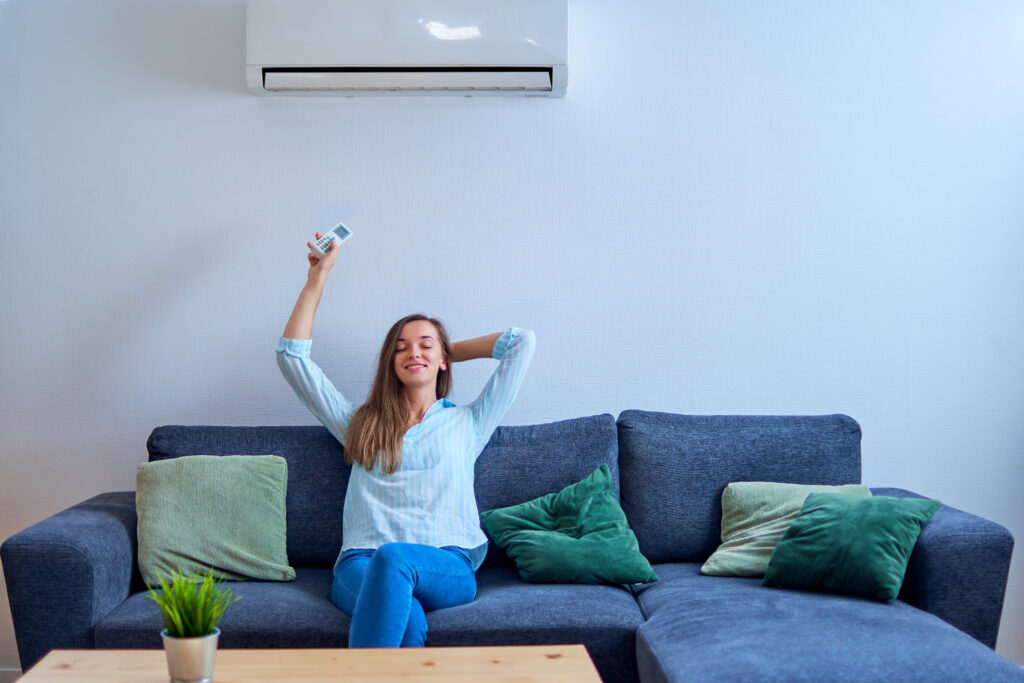During the hottest months in Orem, an efficient air conditioning system isn’t a luxury. It’s a basic need. When your AC can’t keep up with the heat, you’re likely to feel it in more ways than one — rising electric bills, inconsistent cooling, and the constant hum of a unit that never seems to shut off. These problems are signs that your current system may be past its prime.
Aging AC units tend to lose performance, even with regular maintenance. Parts break down more frequently. The system burns more energy to deliver less comfort. Homeowners in Orem often face a point where continuing to patch an old unit costs more than replacing it. If your system has reached that point, knowing when to upgrade can make a major difference in both home comfort and energy savings.
Signs Your AC System Is Aging
Deciding whether your AC system needs an upgrade starts with knowing what to look for. Some signs are obvious. Others creep in slowly over time until you’re suddenly uncomfortable while your AC is still running full blast.
Here are key signs that your air conditioning system may be nearing the end of its useful life:
– More frequent repairs: If you’re calling in technicians several times each summer, that cost adds up fast. Parts wear out and replacements become harder to find as systems age.
– Poor cooling performance: Rooms in your home might feel stuffy or unevenly cooled. If your system is running longer but barely changing the temperature, that’s a red flag.
– Energy bills that keep rising: Even if your usage habits stay the same, an aging system pulls more power just to maintain the same level of comfort.
– Strange noises or smells: Grinding, buzzing, or clicking sounds, along with unusual odors, usually mean there’s a mechanical issue. Older systems are more likely to develop these problems.
– Age of unit: If your AC is around 15 years old or older, it’s generally time to start exploring replacement options. Even if it’s still running, the system may not handle rising summer temperatures efficiently anymore.
For example, if your cooling bill in June is noticeably higher than last year and you’re also dealing with one or two rooms staying warm, that combination is a strong signal that your AC isn’t performing the way it should. Orem’s climate can push older units past their limit quickly, especially during long periods of high heat.
When one or more of these signs start showing up, it’s smart to think ahead instead of reacting to a breakdown right in the middle of a heatwave. Upgrading on your own schedule gives you time to weigh your options, compare systems, and invest in something that fits your home’s comfort needs.
Benefits Of Upgrading Your AC System
Upgrading isn’t just about avoiding another repair. Replacing your old AC system comes with several advantages that can make your home more comfortable and your energy usage more manageable.
Benefits include:
1. Improved energy efficiency: Newer AC models are built with energy-saving performance in mind. They use less electricity to deliver stronger, more consistent cooling.
2. Better indoor comfort: You’ll notice more consistent temperatures, reduced humidity, and faster recovery times when your unit cycles on.
3. Access to modern features: Many newer systems are compatible with smart thermostats or include variable-speed motors that adjust automatically based on the room’s needs.
4. Boost in resale value: A new HVAC system is often seen as a strong selling point when it comes time to list your home. Buyers tend to shy away from homes with very old equipment.
5. Fewer service calls: With a new system, you’re less likely to need repairs anytime soon, especially if installation is done properly and you keep up with maintenance.
These benefits go beyond performance. If replacing an aging system helps cut back your overall energy use while making your home much more livable during hot weather, the decision can be straightforward. Homeowners in Orem facing constant AC repairs during peak summer heat often find that upgrading provides lasting comfort and peace of mind.
Choosing the Right AC System for Your Home
Once you’ve made the decision to replace your aging AC unit, the next step is selecting the right system for your home. This might feel like a big decision, but breaking it down into manageable parts can simplify the process.
Start with the type of system. Central air is common in many homes, offering consistent cooling through ductwork. If your home doesn’t have ducts or you’re looking for room-by-room control, ductless mini-split systems are a solid choice. Each type comes with its own benefits, so knowing your home’s layout and cooling needs will guide you in the right direction.
Think about size and capacity. An AC unit that’s too large will cycle on and off too quickly, never properly dehumidifying the air. One that’s too small will run constantly without fully cooling your space. Both issues lead to discomfort and higher energy use. A load calculation done by our professionals ensures the system is the right fit.
Energy efficiency also plays a big role. Look at the SEER rating, which measures how efficiently the system cools. The higher the SEER, the more efficient the unit. While high-efficiency models usually cost more up front, they can lead to savings on your utility bill over time.
Newer AC systems often come with features that boost comfort and convenience:
– Wi-Fi-enabled thermostats compatible with smart home systems
– Variable-speed motors that adjust automatically to conditions
– Quiet operation features that reduce noise levels
– Advanced filtration for better indoor air quality
To sort through these options and figure out what makes the most sense, lean on our professionals to match you with units that suit both your home and budget. With so many options available, having expert insight makes the process much less overwhelming.
Steps to Take Before Upgrading Your AC
Upgrading your AC system is more than just picking a new unit and waiting for the install. A few smart steps beforehand can help you avoid hidden costs and ensure long-term performance.
Begin with a home energy audit. This process helps uncover insulation gaps, air leaks, outdated windows, or other inefficiencies that may be causing your AC to work harder than it needs to. Fixing these problems first allows the new system to perform at its best.
Then, get your existing system evaluated by our professionals. An experienced technician can assess how well your current setup is working and whether replacing components would delay the need to upgrade. While most aging systems eventually hit a point where replacement makes the most sense, a full evaluation gives you clarity before committing.
Next, research different models and brand options. Think about comfort needs, budget, features, and which systems are most appropriate for the layout of your home. Read up on basic specs, but don’t get bogged down trying to figure everything out yourself. Our professionals can help explain the differences in simple terms and walk you through the pros and cons.
Finally, plan the installation. If you’re replacing an outdoor unit but keeping the existing ductwork, it’s important to make sure the new unit will integrate smoothly with the current setup. In some homes, minor modifications or upgrades like repositioning duct lines or installing a new thermostat may be recommended.
Taking these steps reduces unexpected delays and helps everything go more smoothly when it’s time for the upgrade.
Ensuring Long-Term Performance And Reliability
Once your new AC system is installed, the goal shifts to keeping it running as effectively and efficiently as possible. Skipping regular upkeep can undo many of the benefits of upgrading.
Routine maintenance is key. Change your AC filter every few months, or more often if you have pets or allergies. A clean filter improves airflow, helps your system cool faster, and keeps the interior parts from working harder than they should.
In addition to simple tasks you can do on your own, schedule seasonal checkups with our technicians. These visits give our professionals a chance to inspect the components, clean the coils, ensure refrigerant levels are correct, and check the electrical elements. Regular tune-ups help catch small problems early, protecting your investment.
Setting up a maintenance schedule now can make a big difference in the long run. While your new system will work smoothly at first, small issues can start to build as time goes on. Annual service helps catch things like worn parts or minor leaks before they become expensive repairs.
Keep an eye on things between visits. If you notice longer cooling times, strange sounds, reduced airflow, or higher electric bills, it’s best to reach out sooner rather than later. Staying alert to early warning signs helps extend the life of the equipment and keeps your home comfortable year after year.
Taking the Next Step to a Cooler Home
Replacing an aging AC system isn’t just about solving a current problem. It’s a way to invest in better efficiency, lower energy bills, and more consistent indoor comfort. Whether your old unit is driving up costs or simply falling short during the heat in Orem, upgrading gives you a fresh start with more reliable performance.
The steps involved don’t have to feel overwhelming. From spotting the early signs of wear to choosing a new unit and keeping it maintained, each phase plays a part in helping you get the most out of your system. When you work with knowledgeable professionals, you gain peace of mind knowing your home is set up to handle the heat for years to come.
If you are considering upgrading your aging system for improved comfort and efficiency in Orem, exploring AC replacement in Orem can help you make a well-informed decision that meets your home’s needs while reducing energy costs. The Heating and Cooling Guys Inc. understand how important it is to have reliable cooling systems. For a quick estimate or to book a service visit, please contact us today.



